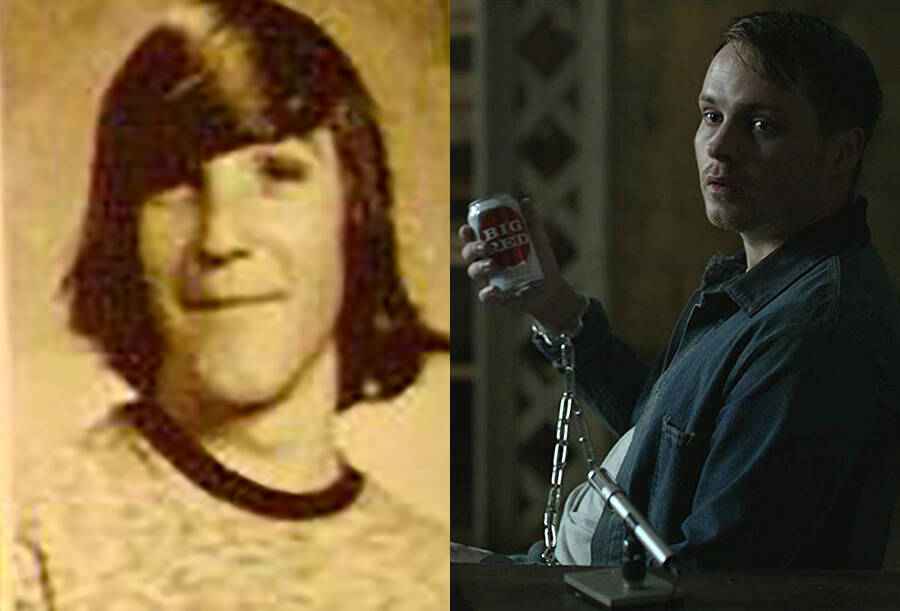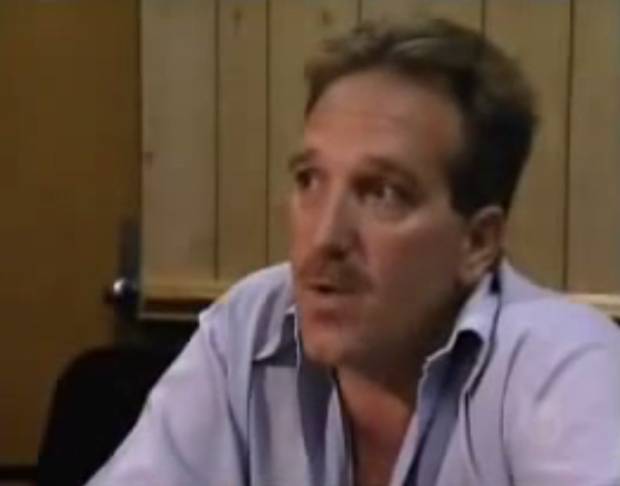Montie Rissell

YouTube/NetflixMontie Rissell (l.), who started raping women when he was 14 and killed 4 women by age 19, is protrayed by Sam Strike (r.) in Mindhunter.
Montie Rissell’s serial rape and killing spree was featured early on in the first season of Mindhunter, and the true story behind Rissell’s depravity was bad as the show portrayed it.
Beginning to rape women at the unbelieveably young age of 14, Monte Rissell’s violent crimes escalated quickly and he was eventually arrested and institutionalized. Rissell continued to rape women while he was a patient at the hospital by sneaking out when he wasn’t supervised, even committing one rape as close to the hospital as inside its parking lot.
Already an extraordinary violent youth, he made the jump to murder when he was just 18, far younger than is typical for serial killers.
For about a year, Rissel would continue to attack, rape, and — in at least four more cases — murder women in the vicinity of the apartment complex he lived in.
It wasn’t long before he was caught, in 1977, and convicted of all five murders, receiving life sentences for each.
Rissell was arrested in large part based on the personality profile of the suspect that the police had a psychiatrist develop based on the crimes already committed.
“I looked at the profile and he could have stamped Montie Rissell on it,” Detective John W. Turner of the Alexandria, Virginia police department told the Washington Post at the time of Rissell’s conviction.
Given the incredible speed with which Rissell’s violent behavior escalated, the psychology that manifested in such an explosively violent way was immediately discussed by both law enforcement and mental health professionals.
It was that psychology that made Rissel a perfect character to explore in the show Mindhunter.
When he was first arrested and confined to a psychiatric hospital, psychiatrists who spoke with the boy told his probation officer that intervention was needed immediately. “Psychiatric and psychological evaluations of Montie indicated he was a disturbed youth who was desperately in need of intensive therapy in a closed setting,” his probation officer wrote in a report to the state.
In 1975, Rissell was committed to Variety Children’s Hospital in Miami for about a year, during which, Variety doctors who had interviewed the bot reported that Rissell “needed to continue psychotherapy at least weekly on an out-patient basis and his mother should be actively involved.”

YouTubeMontie Rissell, speaking with Robert Ressler in a prison interview.
In both Robert Dressler’s book, Whoever Fights Monsters, and in Rissell’s episode of Mindhunter Dressler/Tench learns a critical insight into the psychology of sexual violence through his interview with Rissell.
Rissell hadn’t set out to kill his first murder victim — who incidentally was a sex worker, though Rissel didn’t know this at the time — and only intended to rape her. Rissell was shocked and enraged when she attempted to de-escalate the situation by asking what position he wanted her to be in. Sex workers are among the most vulnerable targets of violent crime, and she no doubt hoped to show her rapist that she wasn’t resisting and that violence wasn’t necessary.
What Rissell’s response to that attempt to defuse the situation was, tragically, the exact opposite. Instead, Rissell escalated to murder for the first time, and he would continue to kill for another year.
What few in law enforcement understood at the time was that rape was very rarely about sexual desire, but rather about power.
Through his interview, Rissell gave Ressler the psychological roots of sexual violence of all kinds: that the violence itself — or more specifically the power the rapist gains through violence — was the entire point of rape. Rapists don’t target their victims out of a spontaneous moment of frustrated lust, like people commonly believed at the time (and still do today, sadly), but rather they targeted women who represented for them the source of their feelings of disempowerment.
Rissell’s rage at this reversal of power that his victim inadvertently represented was the predicate for his escalation to murder, which was his way of taking back the power she denied him through rape. Ressler’s interviews with Rissell allowed Ressler to assemble all kinds of information together into a broader framework that laid the foundation for the criminal behavior profiles of sexual offenders of all kinds.





